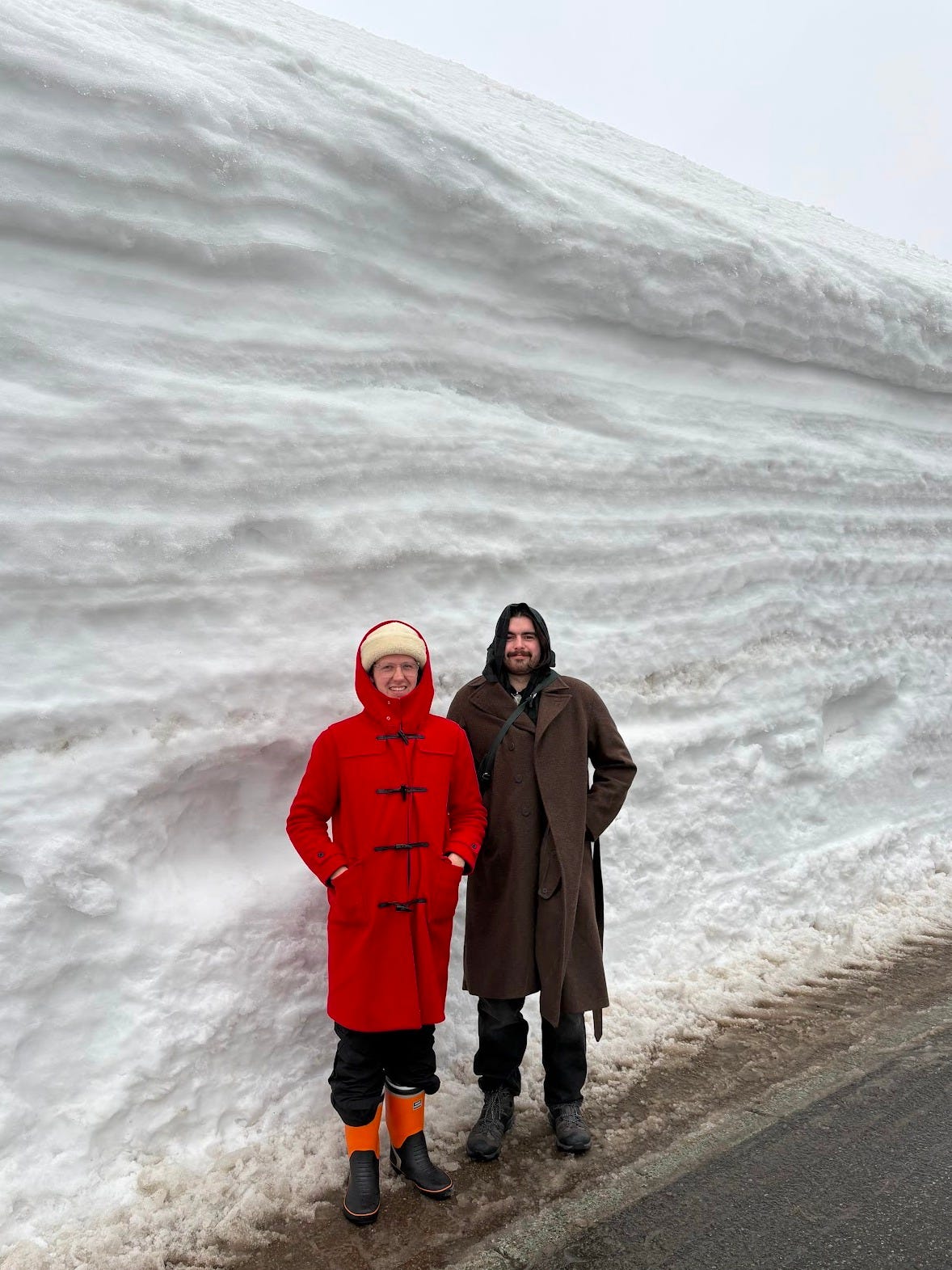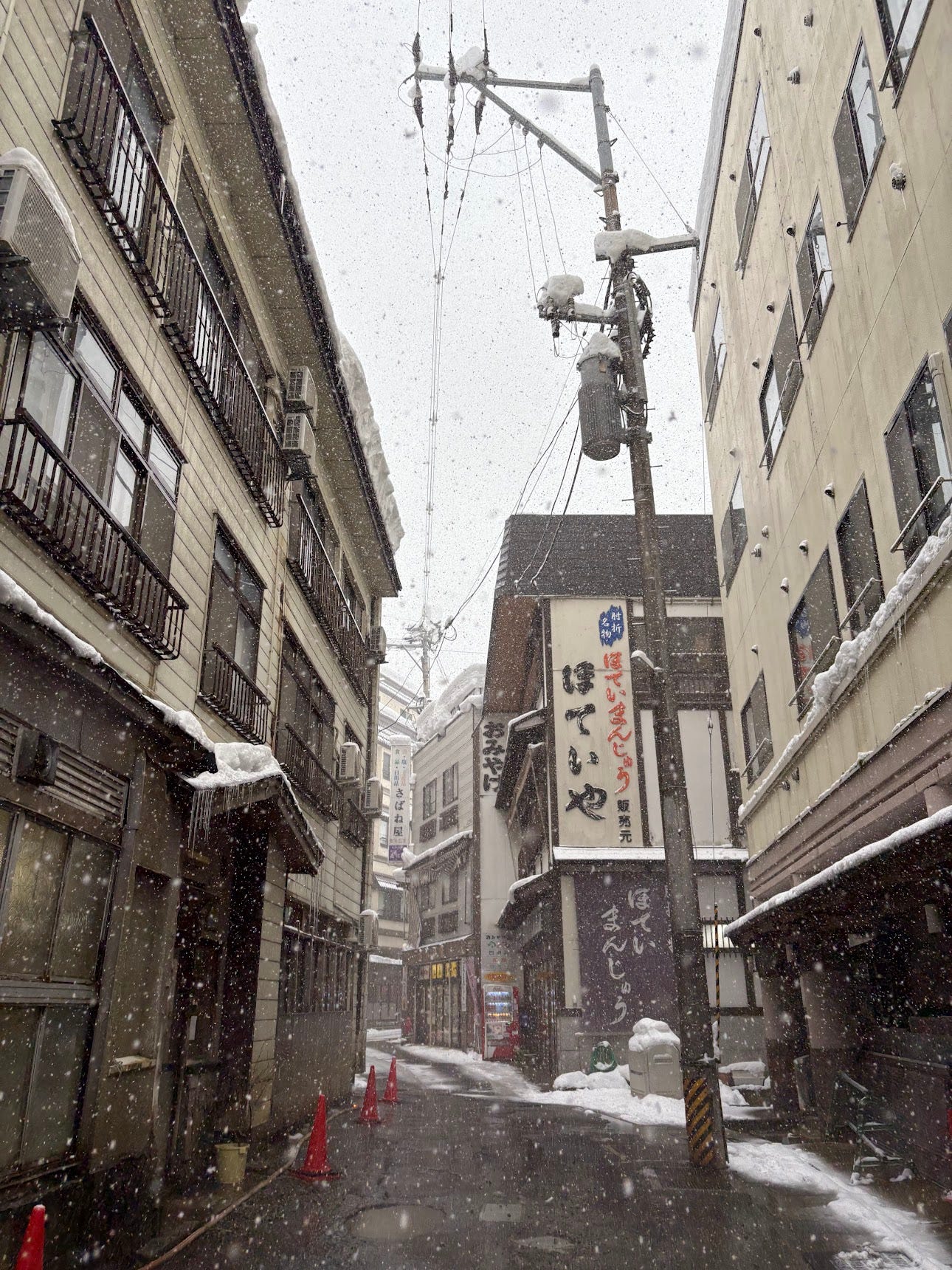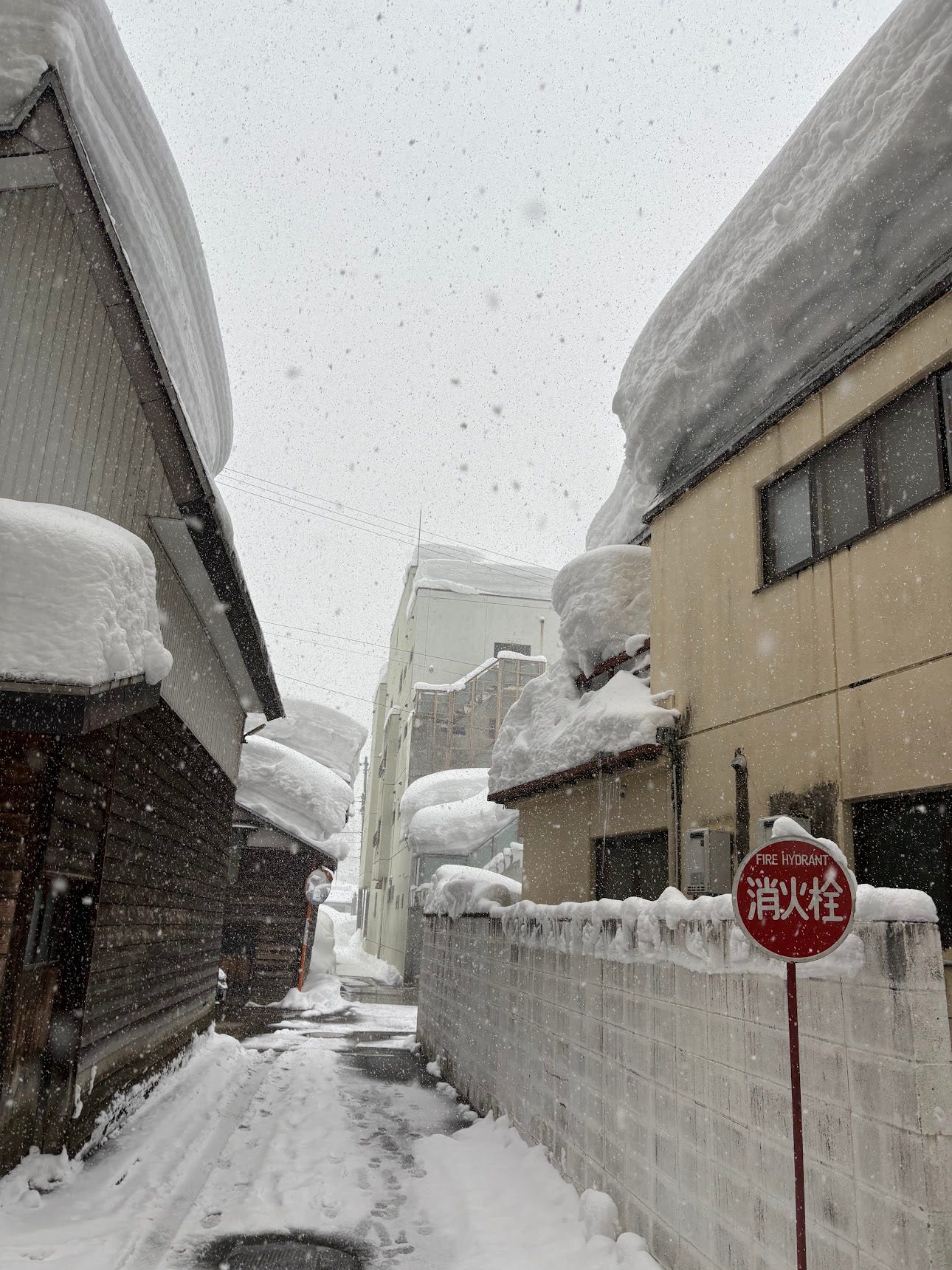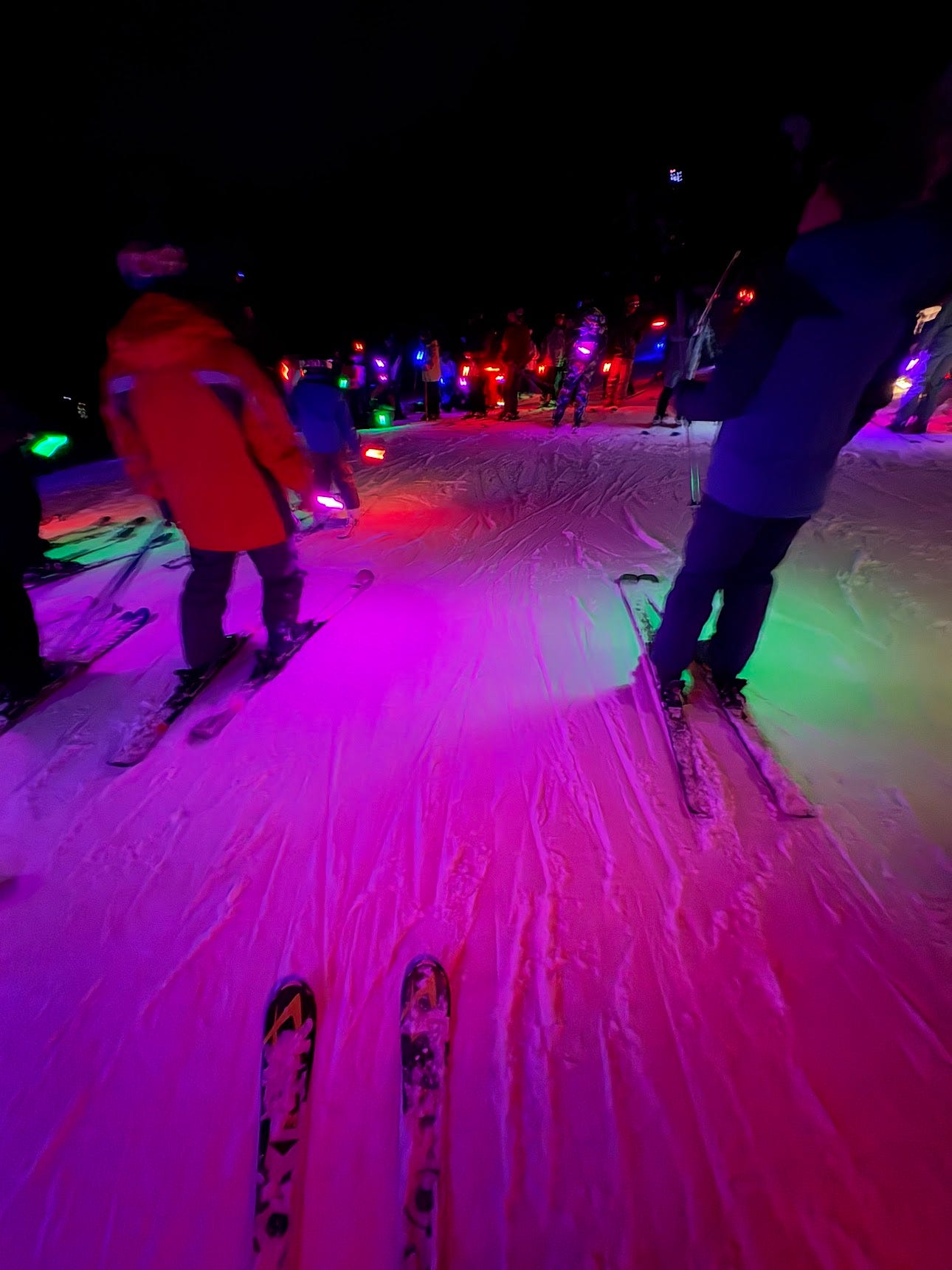For many around the world, winter is their least favorite season. Living in an area with intense winters can be a hassle if you have a pessimistic attitude. There are many inconveniences. The difficulties include shoveling every day, living in cold buildings with expensive heating bills, dangerous roads, etc. However, I have come to love winter. In Japan, a country that famously experiences all four seasons, both the changing of seasons and the seasons themselves have become something to appreciate and enjoy. Perhaps I appreciate winter even more now after experiencing how hot and uncomfortable summers in Japan can be too.
I live in Yamagata Prefecture in the Northeastern Tohoku region. Japan is the snowiest country in the world, and Yamagata is one of its snowiest areas. While the valley where I live avoids acquiring too much snow, the mountains of Yamagata have snow on them from October to June. Just as Japan is known for its unique summer festivals, you may not know that Japan also has a plethora of unique winter festivals too. Since winter has now bittersweetly come to an end, I wanted to highlight some of the unique winter festivals I attended this year.
Shizu Onsen’s Yuki Hatago Akari Festival (月山志津温泉雪旅籠の灯り)
Located on the southern slopes of Yamagata’s sacred Mt. Gassan, Shizu Onsen is a small little hot springs (onsen) village. In winter, it gets an impressive amount of snow and the roads are bordered by these imposing snow walls, which are quite fun to see. They undoubtedly tower over Japan’s little kei cars and humans, but they are also even taller than buses!
For February, Shizu Onsen hosts a unique little festival. Imagine stepping into a snow-covered world illuminated by candlelight. That's the Yuki Hatago Akari Festival, a celebration inspired by Edo-period travel lodgings, known as "hatago," hence the name, which roughly translates to "snow lodge light up." Here, snow walls become works of art, adorned with intricate carvings. During my visit, I witnessed beautifully crafted shelves holding candles, and even found seating areas carved directly into the snow. The "Ice Bar," carved deep within the snow, was fun to see too. It serves both alcoholic and non-alcoholic drinks.
Every weekend or holiday night there was also a short but festive fireworks show. I will never forget standing next to the candle-lit snow, drinking warm hot chocolate, and watching the colorful fireworks above.
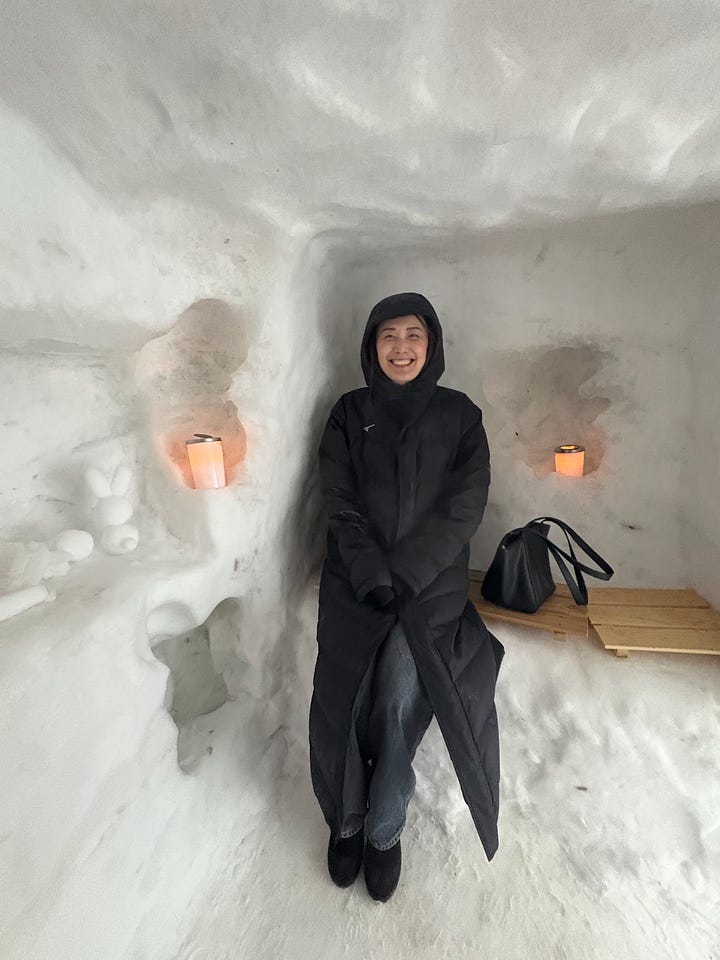
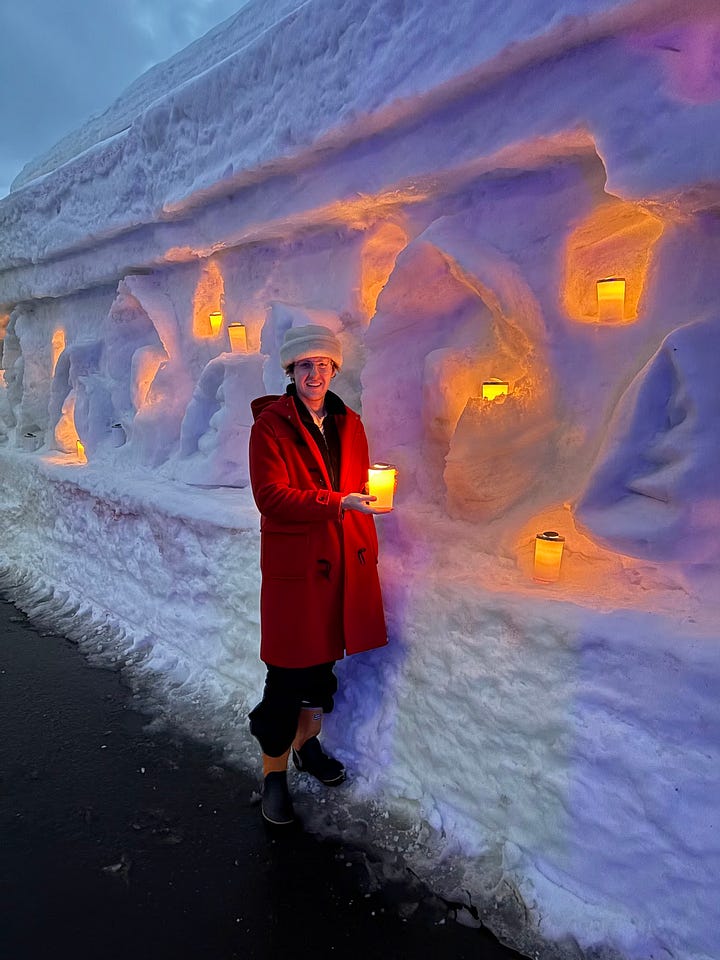
While the area is not too big, and there is not so much to do, it is still worth it to create some beautiful winter memories in a snowy environment. It costs ¥1000 to enter, and that includes riding the shuttle bus that takes you from the parking area to the event area. There are also saunas and hot springs for you to warm up after the cold temperatures. For more information about the festival, you can find it here.
Hijiori Onsen’s Snow Shoveling World Cup (地面出し競争 WorldCup in 肘折)
Hijiori Onsen is nestled on the northern slopes of Mt. Gassan and it receives some of Japan's heaviest snowfall. Though somewhat remote, its tranquil beauty makes it a relaxing retreat. After a scenic 30-minute drive through towering snow walls, a winding bridge leads into the volcanic caldera valley, home to a cluster of traditional ryokan.
The ryokans, built in close proximity, create an intimate, alley-like atmosphere. For those who are familiar with the Japanese animation studio, Ghibli, the resort feels Ghibli-esque. The sheer volume of snow was unlike anything I had ever witnessed. It honestly made me a bit worried about the snow shoveling competition the next day.
Normally, snow shoveling is a dreaded winter chore, a daily burden for car and homeowners alike. However, in Hijiori, it has been transformed into a sport, a source of enjoyment and competition. The town embraces its record-breaking snowfall, turning it into a unique attraction. Every year, during the last weekend of February, Hijiori hosts the snow-shoveling World Cup, where teams of up to six compete to reach the ground first.
As with any Japanese event, there are rules and traditions for the World Cup. The day starts with a sledding competition. One member from each team participates. The distance sled determines the allocated spot on the field in which your team will shovel. The further you sled, the more advantageous your spot will be.
After the sledding competition, all teams line up at the starting point. When the counter starts, participants race across the deep snowy field to their spot and begin shoveling to get to the ground.
This year, in 2025, there were over 330 centimeters of snow. To American readers, that is 10 feet and 10 inches. It took my team around 50 minutes to get to the ground. Not only is 330 centimeters of snow an impressive amount alone but also there needs to be a strategy because the deeper you go, the harder it is to get the snow to the surface. Many times, we would dig deep, only for a little avalanche to fill it in again. We came in 31st place out of 40 teams. While we took 50 minutes, the winning team took around 10 minutes and won a golden shovel accordingly. It was a fun and memorable experience.


Even if shoveling is not your cup of tea, I recommend visiting Hijori Onsen during wintertime, as you will surely enjoy the remote and romantic winter landscape. According to Hijori’s website, “Hijiori Onsen hot spring resort resides in the heart of a volcanic caldera, from which mineral rich waters feed the innumerable bathhouses and onsen ryokan throughout this tiny hamlet. Known mainly to locals for its legendary and often-thought miraculous healing waters, a rare few travelers outside of Japan ever set foot inside the village.”
Yamagata Prefecture is also home to the famous Ginzan Onsen, but this location has become known for its overtourism problem. I recommend Hijiori over Ginzan because Ginzan Onsen is even smaller and just as remote. Due to overtourism, Ginzan has largely become a photographic destination, making it difficult to truly enjoy. Additionally, securing a ryokan booking in Ginzan is significantly more challenging. The inns there are more expensive and require reservations many months in advance. In contrast, Hijiori Onsen offers numerous delightful ryokan options that are both more affordable and readily available.
You can find more details about the snow shoveling competition here. Just a heads up, it's a very local experience and Japanese skills are pretty much a must. Only 40 teams can join. Still, I'd definitely recommend a winter visit to Hijiori Onsen.
Kaminoyama’s Kasedori Festival (上山市民俗行事 加勢鳥)
This festival is truly one-of-a-kind and has some unique costumes. The participants dress up in pointy straw coats and they look quite strange. They are technically supposed to look like birds because the name of the festival, kasedori (加勢鳥), translates to something along the lines of “assistance birds.” However, many describe them as looking like something from a nightmare or dancing versions of Mito, Ibaraki’s signature straw-wrapped natto (fermented soybeans), so their perception can be subjective. Dori also sounds similar to the Japanese word odori (踊り) which means dance. The participants dance around and chant a bird-like “ka-ka” sound.
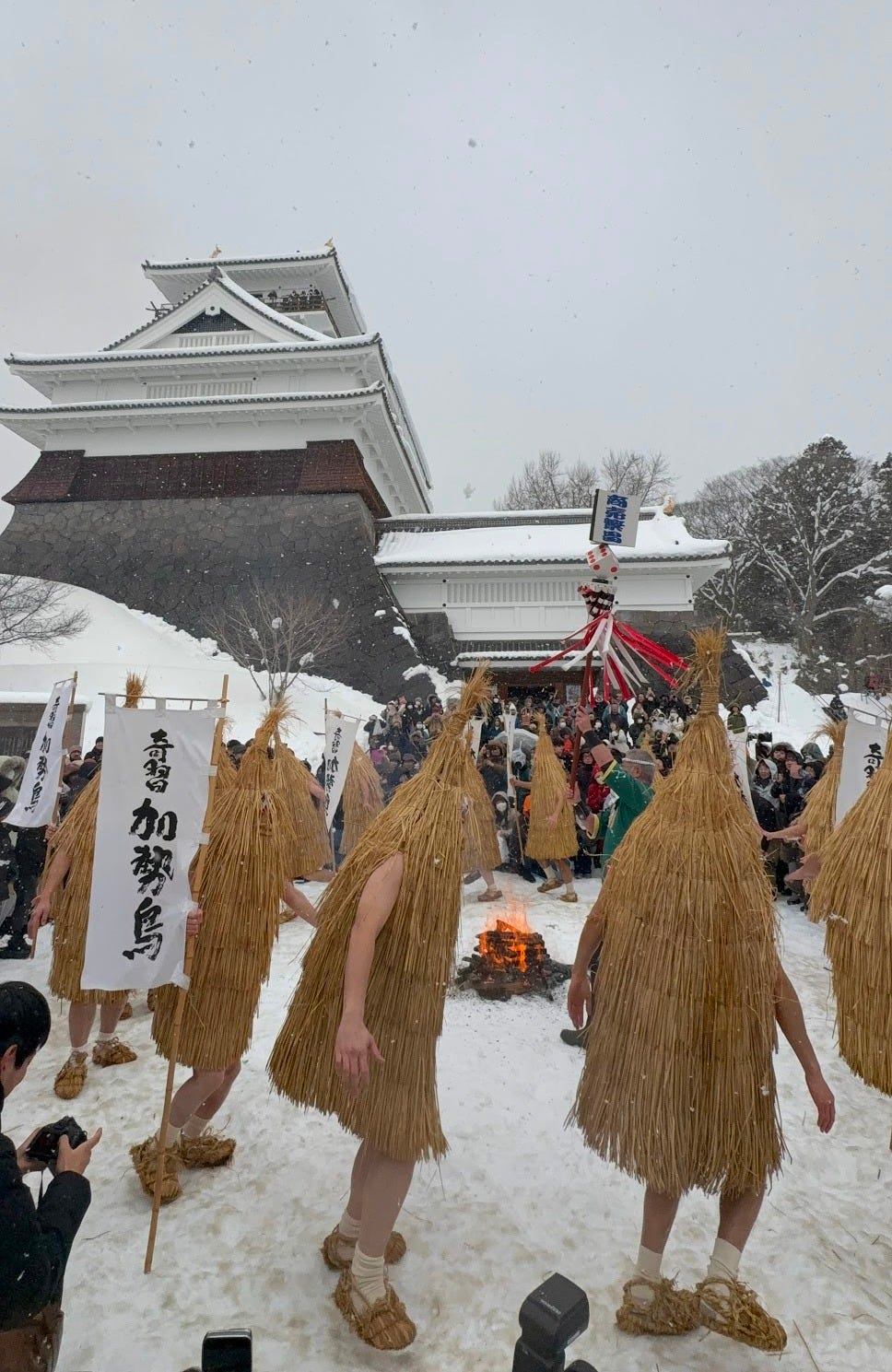
The origin of the festival dates back to the 1600s when a devastating fire spread around the town. Legend has it that the fires were spread by “fire-eating birds.” As a result of the fires, now these “birds” have become symbols of fire prevention as onlookers have the role of splashing water over the straw coats of the dancers. The grit of the dancers is tested, as not only are their barely clothed bodies exposed to the frigid winter air, but the water is freezing too. However, this is symbolic of the Japanese’s perseverance and tenacity as well as the importance of continuing its traditions.
The festival starts at Kaminoyama Castle where the costumes are put on the participants and the dancers do their first performance around a fire. The castle provides a scenic backdrop for the festival. After the festivities at the castle, the groups of dancers split off and travel to places all around the city, including local restaurants, grocery stores, and businesses.
The festival is also said to bring good luck in prosperity to the town. Thus, it continues to happen each year. I definitely recommend attending as it is a very unique, one-of-a-kind festival in Japan. Also in Kaminoyama are many wonderful winter activities, such as skiing at Mt. Zao (see below), and enjoying the hot springs (onsens) all around the town. In addition to the castle itself, there are also old houses that used to be the homes of samurai that are now open as museums.
The festival is free to attend. You can learn more about the festival here.
Zao’s Feast of Snow and Fire (雪と炎の饗宴(松明滑走&冬のHANABI))
Mt. Zao in Yamagata is one of the finest ski resorts in the whole world. At the summit, the mountain's unique conditions create the iconic "snow monsters"—trees encased in layers of snow throughout the winter months. These snowy trees have become a symbol of Yamagata. For skiers, Zao offers an unparalleled experience with approximately 40 lifts and extensive, high-quality trails. It is also incredibly affordable as a day pass is ¥7,500. However, Zao's allure extends beyond skiing; non-skiers can ascend via gondola to witness the snow monsters and enjoy the town's numerous hot springs and traditional inns.
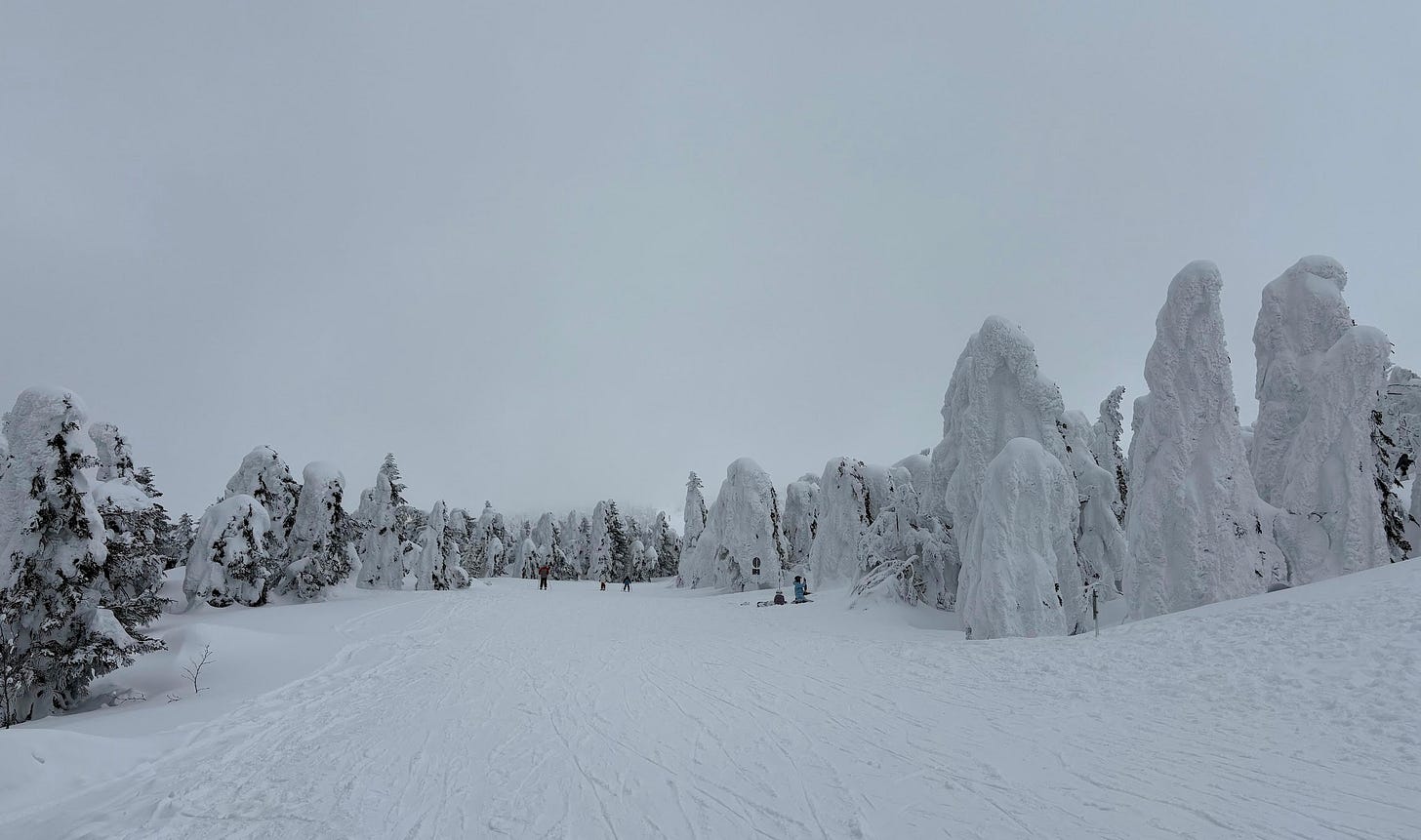
As an avid skier exploring Yamagata's resorts, I recently participated in Zao's night skiing festival, the "Feast of Snow and Fire." The mountain's lights were extinguished, and skiers, each equipped with colored light sticks, descended the slope, creating a mesmerizing spectacle of vibrant hues against the dark canvas of the mountain. As. a participant, it was a memorable experience to be enveloped in the moving, colorful lights.
Following our descent, professional skiers performed a choreographed display, wielding lit flames as they gracefully carved their way down the mountain, producing a truly transfixing visual. The festival caters to both participants and spectators, allowing everyone to witness the enchanting festivities. The evening culminated in a captivating performance by professional fire dancers and a dazzling fireworks display.
More information can be found here.
Conclusion
My perception of winter has shifted dramatically. What began as a season of potential hardship became a time of vibrant cultural immersion, thanks to the unique festivals of Yamagata. The candle-lit snowscapes of Shizu Onsen, the competitive snow shoveling in Hijiori, the captivating Kasedori dance, and the fiery night skiing at Zao offered a glimpse into the heart of Yamagata's winter spirit. And, to be honest, there were many more winter celebrations around just Yamagata I longed to experience but simply couldn't fit into my schedule. If you're seeking a winter adventure that goes beyond the typical tourist trail, Yamagata promises an unforgettable experience, far removed from the crowds of Hokkaido.



